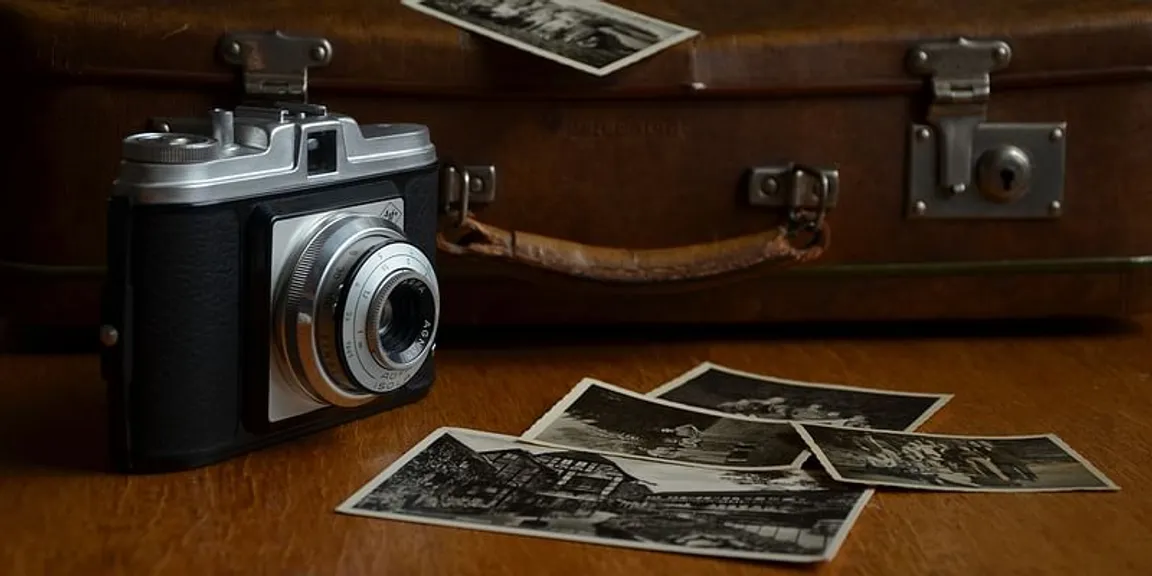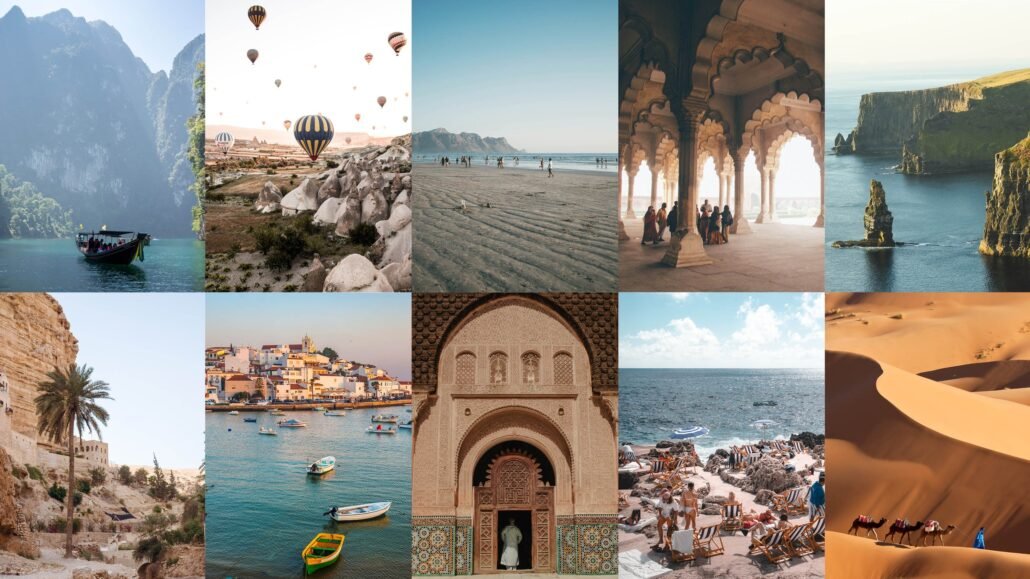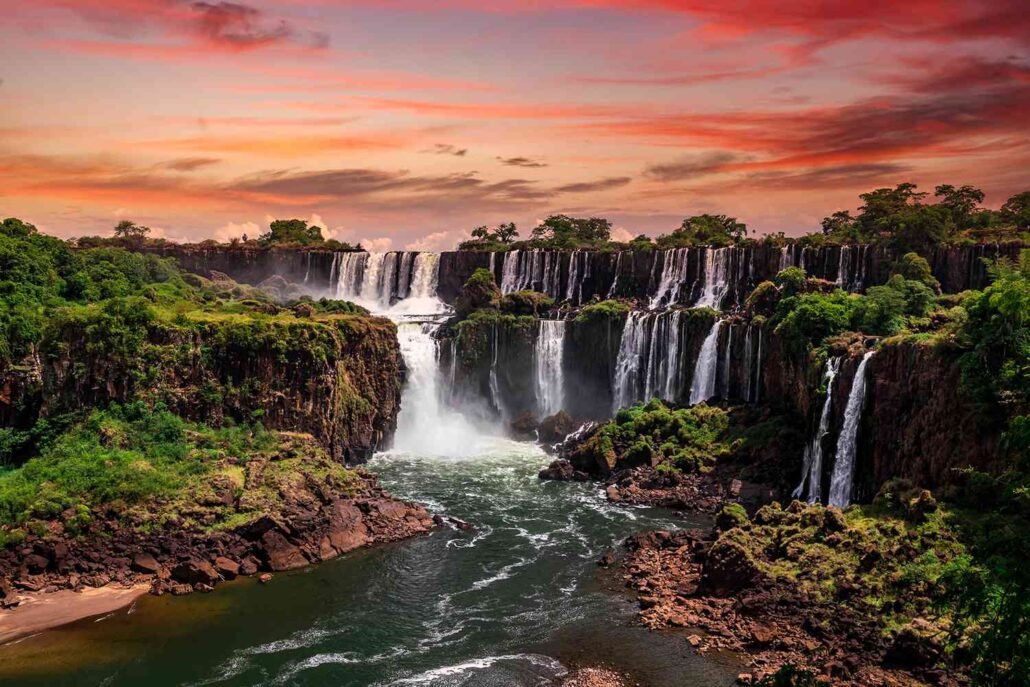Travel photos capture memories and showcase destinations. Images enhance travel stories and inspire exploration.
In the realm of content creation, high-quality travel photography is indispensable, acting as a visual enticement that complements the textual narrative. They not only preserve the memories of one’s journeys but also serve to convey the essence of a location, often sparking wanderlust in those who view them.
With the rise of social media platforms like Instagram, travel photos have gained even greater significance, offering a snapshot of diverse cultures, breathtaking landscapes, and unique experiences. Such vivid imagery encourages readers to engage more deeply with the content, increasing the time spent on-site and potentially improving search engine rankings. Crafting content with striking travel photos encourages click-throughs, shares, and comments, thereby enhancing the overall online visibility of the travel piece.
Crafting Your Travel Photography Kit
Crafting your travel photography kit requires a keen balance between quality and portability. Essential gear for every travel photographer includes a reliable and high-performance camera that offers a range of settings to capture diverse landscapes and spontaneity. Mirrorless cameras are an excellent choice due to their compact size and superb image quality. An assortment of lenses is vital for varying perspectives; a wide-angle lens captures vast scenery, while a telephoto can zoom in on distant details.
Must-have accessories for on-the-go shooting include extra batteries and memory cards to never miss a moment. A sturdy, yet lightweight tripod facilitates long-exposure shots. Additionally, a weather-resistant camera bag allows for safe and convenient transportation of your gear. Lastly, investing in protective lens filters and a portable external hard drive for backups ensures the safety and longevity of your collected memories.
Composing Shots Like A Pro
Composing shots like a pro involves mastering some key principles in travel photography. Understanding the rule of thirds is integral to creating balanced and engaging images. By envisioning your frame divided into nine equal segments, you can place your subject along the intersections to provoke a more natural visual journey for the eye.
Taking advantage of leading lines further enhances the viewer’s experience. Lines can be anything from roads to rivers, guiding the viewer’s gaze through the photograph and adding depth to the image. It’s a powerful technique that instills a sense of direction and purpose within the frame.
Exploring the impact of perspective by finding unique angles can dramatically alter the narrative of your travel photo. This could involve shooting from high above to capture a vast landscape, or getting down low to emphasize the grandeur of a towering monument. Experimenting with different viewpoints allows for a fresh representation of well-known landmarks, setting your work apart from typical tourist snapshots.
Harnessing Natural Light
Capturing the warm, soft light of the golden hour can dramatically enhance your travel photos. To leverage this time, plan to shoot during the first hour after sunrise or the last hour before sunset. The sun’s low position creates a diffuse and flattering light, perfect for photography. Track the sun’s schedule and scout your location in advance to ensure you’re prepared to catch the optimal lighting for your shots.
Confronting harsh midday sunlight may seem challenging, yet it can be harnessed to highlight textures and details. Embrace strong shadows to create dynamic, high-contrast images. Using a polarizing filter can mitigate glare, enriching your photos with more saturated colors and clearer skies.
Tackling low light conditions and nighttime scenes requires a steady hand or a tripod to avoid blurry images due to long exposure times. Embrace the use of wide-aperture lenses to capture as much light as possible. The serene ambience of twilight or the glow of city lights can provide your travel photos with a unique and compelling aesthetic that’s worth staying out late for.
Artificial Lighting On The Move
Understanding how to use flash effectively is paramount for travel photographers aiming to capture stunning images. Controlling the intensity of your flash can prevent photos from appearing washed out or overexposed. An important tip is to experiment with the flash compensation setting; this allows for adjusting the flash’s brightness in correlation with ambient light conditions.
Travel photographers should consider investing in portable lighting gear. Items such as compact flash units, reflectors, and diffusers are lightweight and easy to carry but make a substantial difference in photo quality. Balancing artificial and natural light requires an understanding of the light sources in the scene. Adjusting the white balance and the use of gels can help in blending the flash with the surrounding environment for a cohesive look.
| Gear Type | Use Case | Feature |
|---|---|---|
| Compact Flash Units | Illumination | Adjustable power settings |
| Reflectors | Softening shadows | Portable and foldable |
| Diffusers | Even light distribution | Lightweight |
People And Cultures: Bringing Life To Your Photos
Capturing genuine moments often lies in the balance between candid and posed photography. A candid snapshot can convey the unguarded expressions and emotions of subjects, revealing authentic interactions and spontaneous reactions. Conversely, posed photographs can result in impactful portraits when there’s an established connection, where subjects share a part of their story with the camera.
Building rapport with subjects is crucial for creating portraits that resonate. A photographer must develop trust and a mutual understanding, sometimes with just a smile or a kind gesture. This connection allows the subject to feel comfortable and more expressive, adding depth to the image.
One creative method to showcase culture is through environmental context; integrating the surroundings to reflect cultural elements. Whether it’s architectural lines, bursts of color from a marketplace, or the simplicity of a rural setting, the environment can enhance the narrative and bring cultural stories to life in your travel photos.
Scenic And Landmark Photography
Iconic locations often beckon travelers with their famed vistas, yet the real challenge lies in capturing these sites in a way that evokes originality. Embrace the stereotype with a unique angle or moment to transform the typical to exceptional. Personal perspective is paramount; it breathes new life into well-trodden scenes.
Nature’s elements bring harmony and wonder to landscape photography. Golden hour light can infuse a scene with warmth and drama, while the interplay of shadows and textures crafts a compelling narrative. Crafting the perfect composition is a dance between foreground interest and background majesty.
| Architectural Element | Photography Tips |
|---|---|
| Lines & Symmetry | Align your shots to highlight the symmetry inherent in buildings. |
| Textures & Materials | Play with lighting to accentuate architectural textures. |
| Historical Context | Research and capture the story behind the structures. |
Fine Details: The Essence Of A Destination
Textures and patterns serve as unique signatures of each destination, highlighting the intricate details that may go unnoticed. Dive into the microcosm of a locality by focusing on the variations in architecture, the weaves in textiles, or the fine lines seen in nature. Capture photos that showcase the intertwining of color and shape, which could tell a rich story of cultural heritage or natural history.
Culinary experiences are pivotal in understanding the culture of a place. Local delicacies and traditional food are not merely to be tasted but also visually savored through photographs. Presenting dishes in an aesthetically pleasing manner, utilizing natural lighting and composition, makes them inviting, tempting viewers to immerse in the gastronomical journey through your lens.
Still-life photography can convey powerful narratives without a single human subject. Arranging inanimate objects, whether they be souvenirs, handicrafts, or everyday items, creates a tapestry of tales about the destination. Allow these silent storytellers to evoke emotions and provide context, giving life to the untold stories of your travels.
Editing Tips For Stunning Travel Photos
Balancing colors and correcting exposure are critical steps in ensuring your travel photos look their best. Start by adjusting white balance to add warmth or coolness to an image for accurate color representation. Tweaking the exposure settings can bring out details in overexposed skies or underexposed shadows. Aim for a balanced histogram to eliminate harsh contrasts.
For consistency across your travel series, develop a signature style by consistently applying similar adjustment layers and filter presets. This approach helps to maintain a uniform feel even when shooting under different lighting conditions or in varied landscapes.
Take advantage of editing software and mobile apps while on the move. Apps like Adobe Lightroom Mobile and VSCO offer powerful editing tools to enhance your images directly from your phone. These tools allow for quick edits, ensuring you can share your stunning imagery with ease.
Maximizing Exposure For Your Travel Photography
To make your travel photography resonate on social media, it’s crucial to weave a captivating story around your images. Strong visuals paired with an enticing story can significantly boost engagement. Begin by selecting photos that convey a sense of place and emotion, offering your audience a glimpse into your experiences. A coherent theme or sequence can add depth, enticing viewers to follow your journey.
Your online portfolio serves as your personal gallery where potential clients and followers can view your best work. Ensure that your website is easy to navigate, categorizing your photographs by location or theme. High-quality images with quick loading times and responsive design are indispensable, providing a seamless experience across devices.
Joining and participating in travel photography communities can open doors to new opportunities and insights. Share your work on platforms where peers congregate, such as photography forums, social media groups, or image-sharing websites. Engaging with other photographers and enthusiasts through comments and collaborations will expand your network and enhance your visibility in the field.

Credit: yourstory.com
Frequently Asked Questions Of Travel Photo
What Is Travelling Pictures?
Traveling pictures are photos taken during journeys to capture experiences, landscapes, and moments. They visually document travels, often shared on social media or kept for personal memories.
How Do You Make A Travel Picture?
To make a travel picture, choose a striking location. Use natural light to your advantage, and focus on composition. Capture the scene’s essence by including cultural elements or landmarks. Always keep your camera ready for spontaneous shots and edit the photos for clarity and contrast.
What Is The Meaning Of Travel Photo?
A travel photo captures moments and scenery from journeys, highlighting experiences in various destinations. It’s a visual representation of one’s adventures and discoveries while traveling.
What Makes A Good Travel Photo?
A good travel photo captures unique moments, highlights local culture, boasts vibrant colors, shows the emotion of the scene, and includes compelling compositions.
Conclusion
Wrapping up, we’ve explored the art of travel photography and its power to capture our world’s stunning beauty. For both novice and seasoned travellers, these visual memories serve as a passport to past adventures. Don’t forget, your lens can freeze a moment, telling a thousand untold stories.
Keep snapping, and happy travels!




